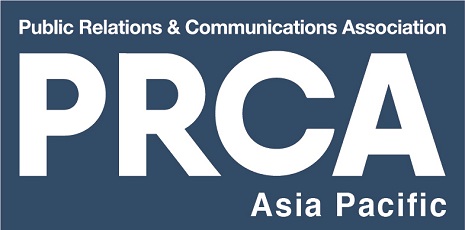Managing corporate communications in APAC can be complex. After all, the region is home to diverse languages, cultures and media consumption behaviour. This has resulted in varying industry practices and preferences on communications channels, media budgets, content production, and more.
With that in mind, PR Newswire recently launched its inaugural Asia-Pacific Corporate Communications Report to better understand the strategies, priorities and challenges that public relations and communications professionals face when planning regional campaigns.
The report surveyed close to 948 industry professionals across 10 major markets – Australia, mainland China, Hong Kong, Taiwan, Indonesia, Malaysia, Singapore, South Korea, Thailand and Vietnam. The survey was conducted from September to November 2019. Industry professionals from 7 PR Newswire’s partners, including Public Relations & Communications Association (PRCA) Southeast Asia, also provided their inputs.
Despite the diversity of the region, the report revealed that some markets face similar pertinent challenges. The most prevalent one is measuring the impact of communications, which is rated as the top challenge in Australia, Singapore, Taiwan and Vietnam. On the other hand, maintaining trust and audience engagement shows the greatest variance across the markets, with 69% of respondents in Vietnam citing it as a challenge, while close to one-quarter of respondents in South Korea found it difficult.
PR Newswire summarized these cross-market insights into five key takeaways from the full report, which can be downloaded here.
- Enhancing brand influence is the top priority for APAC businesses

(Source: PR Newswire 2020 Asia-Pacific Corporate Communications Report)
Nearly six out of 10 businesses in APAC prioritize boosting brand awareness and visibility in their communications campaigns over generating sales and conversion. Industries that prefer to focus on brand influence most include automobile, finance, manufacturing, health/medical care.
On striking a balance between the two communications outcomes, Angela Chan, Director of China Business of food manufacturing company Lee Kum Kee, believes that the impact of communications efforts is dependent on the measurement period. “In the FMCG industry, the most intuitive way is to measure additional sales volume,” she says. “Shorter-term communications metrics include the number of views, shares, etc., while the longer-term and more important metrics are share of voice and brand building within the industry.”
- Businesses place the highest importance on sharing their corporate stories on news websites

(Source: PR Newswire 2020 Asia-Pacific Corporate Communications Report)
The top channels prioritized by companies across the region are news websites (70%), followed by social media (60%), corporate websites (58%) and print media (56%). Businesses from Thailand (80%) and Australia (75%) place the most emphasis on getting their stories on news websites.
The choice of distribution channels also varies by the type of companies. B2B businesses tend to place more importance on their corporate websites, offline activities/events and email/EDM, while B2C companies prefer to push out multimedia content through TV radio, mobile news app and videos.
- The top 3 communications challenge faced by businesses are content creation, measuring campaign impact and budget constraints

(Source: PR Newswire 2020 Asia-Pacific Corporate Communications Report)
More than half of respondents cited that producing diversified content for various channels as the top communications challenge, especially for businesses in mainland China, Thailand and South Korea. Equally challenging is measuring the impact of communications (54%) through outcomes such as sales conversion and brand recognition, which is a more pronounced challenge in markets such as Vietnam, Australia and Singapore. Rounding up the top three challenges is securing communications budget, Indonesia, mainland China and Singapore flagged it up as the main challenge.
Martin Roll, a business and brand strategist, and the author of Asia Brand Strategy, points out that measuring the impact of communications efforts and keeping relevant audiences engaged will be two key challenges this year. “Global companies must strive for authenticity, relevance and transparency across their messages to drive engagement,” he says. “This will enhance communications outcomes as global audiences will respond to companies and brands seeking to contribute to a better world.”
- Press releases is the most preferred channel to promote new products, services or business developments

(Source: PR Newswire 2020 Asia-Pacific Corporate Communications Report)
Sending press releases to the media is preferred by 85% of businesses when it comes to announcing significant business developments or promoting new products and services. This is followed by using other platforms such as social media (79%), corporate websites (72%).
Press releases are also regarded as the most useful source of information by journalists in APAC, according to Cision’s 2020 State of the Media Report. 36% of those surveyed prefer receiving information from press releases – more than other sources like spokesperson and e-mail pitches.
- Close to one-third of businesses are planning to increase their earned media budget this year

(Source: PR Newswire 2020 Asia-Pacific Corporate Communications Report)
Earned media is becoming increasingly more valuable in the eyes of management, as it sees significant growth in its slice of media budget pie around the world.
In APAC, close to one-third of businesses plan to increase their earned media budgets this year – more than paid media budgets. Larger businesses with over 1,000 staff show a greater willingness to focus on earned media. 43% of such businesses intend to up their earned media budgets, compared to 35% of smaller businesses (less than 100 staff).
Get the full 2020 Asia-Pacific Corporate Communications Report to find out more strategies, priorities and challenges across 10 major markets and get an invaluable reference point to plan your regional campaigns.
The article first appeared in PR Newswire’s Beyond PR Blog.


